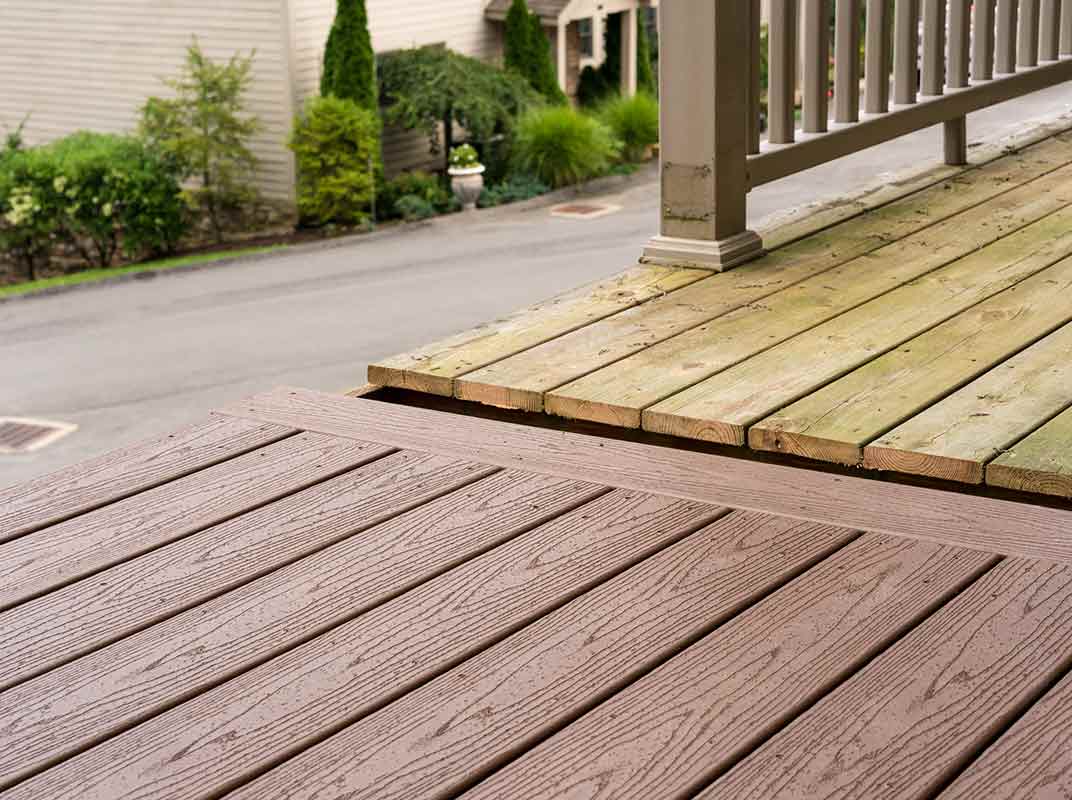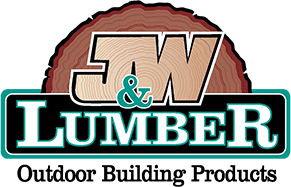
There are many environmentally friendly reasons to choose lumber for your next project. Lumber requires few machines to produce; all a tree needs to grow is soil, water, and sun. And, once lumber has reached the end of its useful life, it returns to the same earth through decomposition rather than existing indefinitely in a landfill. All of this is why lumber, when responsibly harvested, is considered a renewable resource.
As with every natural material, lumber is eventually subject to degradation over time. Harsh sun, moisture, pest rot presence, and temperature fluctuations will all eventually take their toll. If you don’t know what to look for, you might not realize that your wood is compromised until it’s too late. Here are the telltale signs that you need to replace or repair your lumber.
Softness
Your fingertips can tell you a lot about the health of your wood. Even the softest woods should resist a moderate amount of fingertip pressure. Press firmly with one or two fingers on areas that you suspect may be damaged. Rotten or weakened wood will be soft and spongy. If you can press a shallow indentation (or a deeper hole) into your wood, it’s time to make the call for a replacement lumber delivery.
Small Holes and Powdery Residue
Notice pinprick-sized deep holes in your wood? It’s likely a sign that your lumber is being chewed on by termites or other wood-consuming pests. Look for small piles of sawdust powder on the ground around these areas, a sure sign that bugs are feasting on your lumber and it may be time to replace it.
Peeling or Bubbling Paint
As wood absorbs moisture, it tends to expand. Alternatively, as it releases moisture, it tends to contract. This expanding and contracting movement contributes to paint to bubbling up or chipping. If you notice areas where your paint is starting to bubble up or peel away from the surface of the wood, look beneath the paint surface to find where the problem originates. Sometimes, this is an indicator that it’s time to strip and repaint your wood; other times, the board itself will need to be replaced.
Discoloration
Areas that are in constant contact with moisture will start to show signs of staining or other discoloration over time. Fence posts and planks that touch raw earth or are frequently sprayed by sprinklers, as well as the lowest part of your home’s siding, are the areas that are most likely to experience damage. Inspect these areas closely and press with a fingertip to check the strength of the wood. As mentioned above, soft lumber means it’s time for a swap.
Read More: Protect Your Wood to Extend Its Life
Warping, Bowing or Wobbling
Wooden structures that bear weight (like decks or patio covers) can loosen over time, due to use and ongoing contact with the elements. As wood expands and contracts with temperature and moisture fluctuations, this process can loosen hardware connections and/or create plank warping. Give the posts of your deck, patio cover, or fence a firm jiggle. If they move at all, take a closer look. You might need to simply re-tighten or replace your hardware, or it could be a sign that your lumber’s integrity has been compromised and it needs to be replaced. Remember that new construction with fresh lumber will tend to contract as the wood continues to dry out, leaving a bit of flexibility in your connections. If you build a project with new lumber, check on it a month later to tighten up any connection points that are no longer snug.
Read More: The 7 Most Common Decking Mistakes Homeowners Make.
Faded Stain
A fresh stain can spruce up even the saddest looking lumber. If your wood is in good shape (no weak spots or discernable rot), then you may not need to replace it. Instead, sand down the surface until you arrive at the raw lumber. Then, do another pass with your favorite oil-based stain. Oil-based stains are the ideal choice because they penetrate the wood, providing deep protection against heat and moisture. Alternatively, you can simply brighten up your wood by cleaning it with oxalic acid, which comes in liquid or powder form.
Lots of Time Has Passed
Even though you might not see or feel obvious signs that it’s time to repair or replace your lumber, if it has been decades since you have given any thought to your fence, deck, patio cover, siding or trim, now’s a great time to start paying attention. Replacing or repairing old lumber is a crucial aspect of preventative maintenance on your home, since damaged wood can be dangerous. Installing a pergola, adding a low deck or walkway to your yard or replacing a dated picket fence with an attractive horizontal fence can breathe new life into a neglected outdoor space. Stroll your neighborhood for creative ideas then speak with the team at your local lumber yard. They’ll tip you off to current outdoor trends, help you find the right materials, or even schedule a lumber delivery directly to your project site.
Don’t wait until you are ready to sell or refinance your house to pay close attention to the health of your lumber. Take the time to look closely at the areas that need to be replaced or repaired and keep your exterior space fresh — and structurally sound — for years to come.
